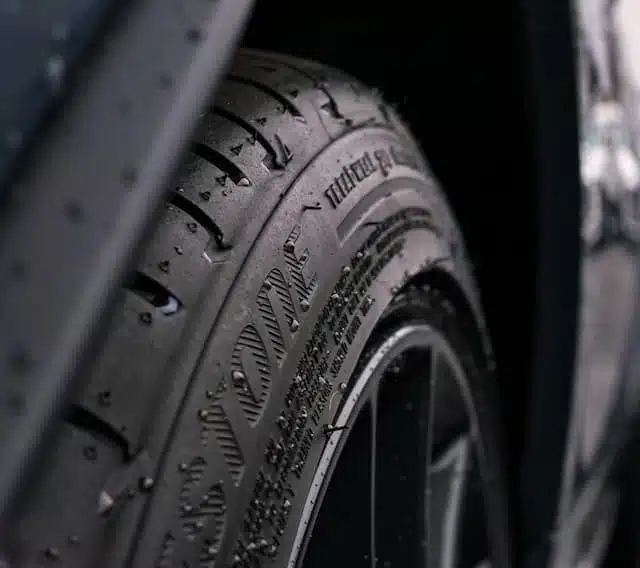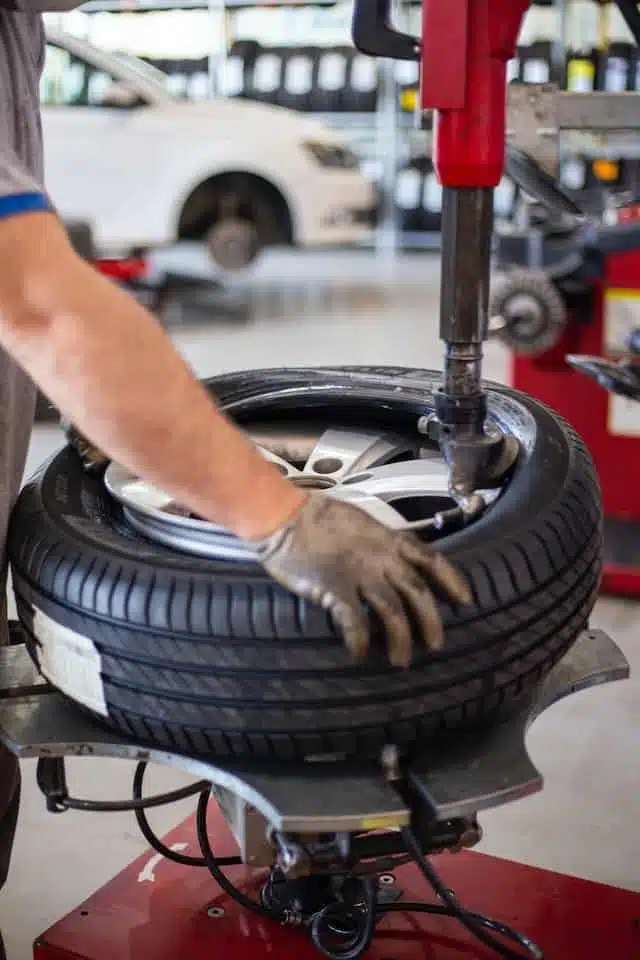
Proper vehicle maintenance is essential for ensuring a smooth and safe driving experience. Two crucial aspects of this maintenance are wheel alignment and wheel balancing. While these terms are often used interchangeably, they serve different purposes in the overall upkeep of your vehicle. This article aims to clarify the differences between wheel alignment and balancing, as well as their importance in keeping your car running smoothly.
Wheel Alignment

Definition and Explanation
Wheel alignment refers to the adjustment of a vehicle’s suspension components to meet the manufacturer’s specifications. Proper alignment ensures that the tires make optimal contact with the road, promoting even tire wear and better handling.
Types of Alignment Issues
Toe-in and toe-out
These terms describe the angle at which the tires are positioned relative to each other. If the front of the tires point inward or outward, this can lead to uneven wear and poor handling.
Camber
Camber refers to the angle of the wheel relative to the vertical axis. If a wheel is tilted too far inward or outward, it can cause uneven tire wear and negatively affect vehicle handling.
Caster
Caster is the angle of the steering axis relative to the vertical axis. Incorrect caster can cause steering problems and make the vehicle difficult to control.
Causes of Misalignment

Impact and wear
Hitting potholes, curbs, or other obstacles can cause misalignment. Normal wear and tear on the suspension can also lead to alignment issues over time.
Suspension component issues
Damaged or worn suspension components can affect wheel alignment.
Symptoms of Poor Alignment
Uneven tire wear
Misalignment can cause tires to wear unevenly, reducing their lifespan.
Steering problems
Poor alignment can make the vehicle difficult to steer and control.
Vehicle pulling to one side
Misaligned wheels can cause the vehicle to pull to one side while driving.
Benefits of Proper Alignment
Improved fuel efficiency
Correct alignment reduces rolling resistance, improving fuel economy.
Longer tire life
Properly aligned wheels help prevent premature tire wear.
Better vehicle handling
Correct alignment ensures optimal tire-road contact, resulting in better handling and a smoother ride.
Wheel Balancing

Definition and Explanation
Wheel balancing is the process of equalizing the weight distribution of a tire and wheel assembly. Proper balancing ensures that the tire wears evenly and the vehicle does not experience vibrations while driving.
Causes of Wheel Imbalance
Manufacturing inconsistencies: Small differences in the manufacturing process can cause a tire or wheel to be slightly heavier in one area.
Tire wear
As tires wear, their weight distribution can change, leading to an imbalance.
Road hazards
Hitting potholes or other road debris can cause wheel weights to shift or fall off, resulting in an imbalance.
Symptoms of Poor Wheel Balance
Vibration at certain speeds
An imbalanced wheel can cause vibrations felt in the vehicle, typically at specific speed ranges.
Uneven tire wear
Imbalanced wheels can cause uneven wear patterns on the tires.
Steering wheel shake
Poor wheel balance can cause the steering wheel to shake, especially at higher speeds.
Benefits of Proper Balancing
Smoother ride
Balanced wheels provide a smoother, more comfortable driving experience.
Extended tire life
Proper balancing helps ensure even tire wear, prolonging their lifespan.
Improved vehicle performance
Balanced wheels offer better handling and performance.
Key Differences Between Wheel Alignment and Balancing

Goals of Each Service
Wheel alignment focuses on adjusting the suspension components to ensure optimal tire contact with the road, while wheel balancing equalizes the weight distribution of the tire and wheel assembly to minimize vibrations and promote even tire wear.
Procedures and Equipment Used
Alignment adjustments involve altering the vehicle’s suspension components, using specialized equipment like alignment racks and computerized systems. Balancing, on the other hand, typically uses a balancing machine to determine weight imbalances and apply corrective weights to the wheel assembly.
How They Affect Vehicle Performance
Misaligned wheels can cause steering difficulties, uneven tire wear, and reduced fuel efficiency, while imbalanced wheels can lead to vibrations, steering wheel shake, and uneven tire wear.
Frequency of Required Maintenance
Wheel alignment is generally recommended every 12,000 to 15,000 miles or when noticeable symptoms occur, while wheel balancing should be done every time tires are rotated, usually every 5,000 to 7,500 miles.
Recommendations for Vehicle Owners
Regular Maintenance Schedule
Adhere to the manufacturer’s recommended maintenance schedule for wheel alignment and balancing, or consult a qualified technician for guidance.
Signs of Alignment or Balance Issues
Be attentive to potential signs of alignment or balance problems, such as uneven tire wear, vehicle pulling to one side, or vibrations at certain speeds.
Choosing a Qualified Service Provider
Ensure that your vehicle receives alignment and balancing services from a reputable, certified technician using proper equipment.
Frequently Asked Questions on Wheel Alignment and Balancing

In summary, understanding the key differences between wheel alignment and balancing is essential for proper vehicle maintenance. Both services are crucial for optimal performance, fuel efficiency, and tire longevity. By staying informed and following recommended maintenance schedules, vehicle owners can enjoy a smoother, safer driving experience.
Q: What is the difference between wheel alignment and wheel balancing?
Wheel alignment involves adjusting a vehicle’s suspension components to ensure the tires make optimal contact with the road, promoting even tire wear and better handling. Wheel balancing, on the other hand, is the process of equalizing the weight distribution of a tire and wheel assembly to minimize vibrations and promote even tire wear.
Q: How often should I have my wheels aligned and balanced?
A: It is generally recommended to have your wheels aligned every 12,000 to 15,000 miles or when you notice symptoms of misalignment. Wheel balancing should be done every time your tires are rotated, usually every 5,000 to 7,500 miles.
Q: What are the symptoms of poor wheel alignment?
A: Symptoms of poor wheel alignment include uneven tire wear, steering problems, and the vehicle pulling to one side while driving.
Q: What are the symptoms of poor wheel balancing?
A: Symptoms of poor wheel balancing include vibrations felt in the vehicle at certain speeds, uneven tire wear, and the steering wheel shaking, especially at higher speeds.
Q: Can I perform wheel alignment and balancing at home?
A: While it is possible to balance wheels at home using a DIY kit, it is not recommended for most people, as specialized equipment and expertise are needed for accurate results. Wheel alignment, on the other hand, should only be performed by a qualified technician using proper equipment, as it involves adjusting the vehicle’s suspension components.
Q: How do I know if I need wheel alignment or balancing?
A: Pay attention to potential signs of alignment or balance issues, such as uneven tire wear, vehicle pulling to one side, or vibrations at certain speeds. If you experience any of these symptoms, consult a qualified technician for a thorough inspection and necessary adjustments.
Q: Will wheel alignment or balancing improve my fuel efficiency?
A: Proper wheel alignment can improve fuel efficiency by reducing rolling resistance. While wheel balancing does not directly affect fuel efficiency, it can contribute to a smoother ride and better handling, which may help you maintain a consistent speed and reduce unnecessary acceleration and deceleration.
Q: Can I drive my vehicle with poor wheel alignment or balance?
A: Driving with poor wheel alignment or balance can cause uneven tire wear, reduced fuel efficiency, and negatively impact your vehicle’s performance and handling. While it may not be immediately dangerous, it is best to address these issues as soon as possible to prevent further damage and ensure a safe driving experience.
Q: How much does it cost to have my wheels aligned and balanced?
A: The cost of wheel alignment and balancing services can vary depending on your location, the type of vehicle, and the service provider. It is best to contact local service providers for specific pricing information.
The cost for wheel alignment services can range from $50 to $150 for a two-wheel alignment and $100 to $200 for a four-wheel alignment, depending on your vehicle type and location. Wheel balancing costs typically range from $15 to $50 per wheel. Keep in mind that these prices can vary, so it’s best to contact local service providers for specific pricing information.
Q: How long does it take to perform wheel alignment and balancing?
A: Typically, wheel alignment takes about 1-2 hours, while wheel balancing takes around 30 minutes to an hour. However, the exact duration can vary depending on the complexity of the adjustments needed and the service provider.
Q: Can new tires be imbalanced or misaligned?
A: While new tires are generally well-balanced, manufacturing inconsistencies can sometimes lead to minor imbalances. Similarly, even after installing new tires, your vehicle’s alignment could still be off due to suspension component issues or previous impacts. It is a good practice to have your wheels balanced and aligned when installing new tires.
Q: Can hitting a pothole or curb affect my wheel alignment or balance?
A: Yes, hitting a pothole, curb, or other road hazards can cause wheel misalignment and affect wheel balance by shifting or dislodging wheel weights. If you’ve recently experienced a significant impact, it’s a good idea to have your alignment and balance checked by a qualified technician.
Q: Do I need to align all four wheels, or can I just align the front wheels?
A: While some older vehicles may only require front-end alignment, most modern vehicles require a four-wheel alignment to ensure proper handling and even tire wear. Always consult your vehicle’s manufacturer recommendations or a qualified technician for guidance.
Q: How can I tell if my vehicle has a suspension problem or just needs an alignment?
A: While some symptoms may overlap, suspension problems often present with additional signs such as abnormal noises, excessive bouncing, or poor overall handling. If you suspect a suspension issue, it’s best to consult a qualified technician who can perform a thorough inspection and recommend the appropriate course of action.
Q: Are there any DIY methods to check wheel alignment and balance at home?
A: While there are some DIY methods to check for gross misalignment, such as measuring tire tread wear or using a straightedge, these methods are not as accurate as professional alignment equipment. As for wheel balancing, it requires specialized equipment and is not recommended for DIY attempts. It’s always best to consult a qualified technician for accurate assessment and adjustments.
Q: How can I find a reliable service provider for wheel alignment and balancing?
A: Look for reputable automotive service providers in your area, and check for reviews or recommendations from friends, family, or online sources. Ensure that the chosen provider is certified and uses the proper equipment for alignment and balancing services.
Q: Is it necessary to perform wheel alignment and balancing after installing new suspension components?
A: Yes, after installing new suspension components, it is essential to have your vehicle’s wheels aligned and balanced. Changing suspension parts can affect the alignment and weight distribution, so it’s crucial to ensure that these adjustments are made for optimal performance and tire wear.
Q: Can poor wheel alignment or balance cause damage to other vehicle components?
A: Yes, poor wheel alignment or balance can cause additional wear and tear on suspension components, steering systems, and tires. Prolonged misalignment or imbalance can lead to more severe issues, such as damaged wheel bearings or premature tire replacement.


